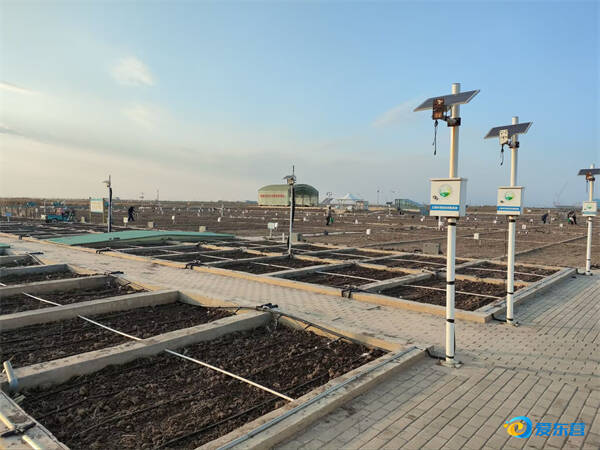
In the chilly winter, the city of Dongying, located in East China's Shandong province, is thriving on the increasing and productive use of its salty land.
At the salty land demonstration base in the Yellow River Delta, staff are currently busy with rice planting.
Saline agriculture produces food on salty or saline soils and in areas where fresh water is scarce. In addition to fresh water, brackish water or even seawater can be used.
Since the National Technical Innovation Center for Comprehensive Utilization of Saline-Alkali Land established itself in Dongying, 18 universities, research institutes and enterprises focusing on saline land agriculture have come together.
This strong platform is driving the development of salty land use.

The farmlands are divided into over 80 areas with different salt content for testing crop salt and alkali tolerance. [Photo/Aidongying APP]
Quality seeds are another key element in transforming barren land into productive farmland.
To unlock the "seed code" for a bountiful harvest, Dongying has fully supported breakthroughs in key technologies for salt-alkali resistant germplasm resources. Through efforts to adapt seeds to the unique conditions of salty land, the city has cultivated seeds that thrive in the salt-alkali soils of the estuary area.
The fruit grown on the land also boasts excellent quality. For example, tomatoes cultivated in the modern agricultural demonstration park managed by the China Academy of Sciences (CAS) are juicy, with a perfect balance of sweetness and acidity and a rich flavor.
"The first season of improved tomatoes yielded 4,000-5,000 kilograms per acre (about 0.067 hectares), with a value of at least 50,000 yuan ($690) per acre," said Ou Yangzhu, a doctoral advisor at the CAS.

Juicy tomatoes, full of rich flavor, flourish on salty land. [Photo/Aidongying APP]
As Dongying continues to innovate and harness the potential of its salty land, it's paving the way for sustainable agricultural development, turning once-barren soil into a thriving hub of productivity and opportunity.